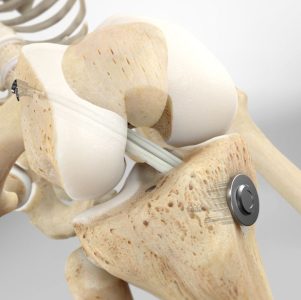ACL Reconstruction: Understanding Its Necessity and Various Techniques
Introduction
When it comes to knee injuries, one term that often surfaces is ACL reconstruction. Anterior Cruciate Ligament (ACL) injuries can be debilitating, affecting individuals of all ages and activity levels. In this comprehensive guide, we delve into why ACL reconstruction is necessary and explore various techniques employed in the process.
The Crucial Role of ACL
The ACL is a vital ligament in the knee, providing stability and preventing excessive forward movement of the tibia in relation to the femur. Injuries to the ACL commonly occur during sports that involve sudden stops, changes in direction, or direct impact. These injuries are not exclusive to athletes; they can happen to anyone engaged in physical activities.

Why ACL Reconstruction?
Restoring Stability
Following an ACL injury, the knee often loses its stability, leading to discomfort and limiting mobility. ACL reconstruction becomes necessary to restore stability and functionality to the knee joint, enabling individuals to return to their regular activities.
Preventing Long-Term Damage
Neglecting an ACL injury can result in long-term damage, including the development of osteoarthritis. ACL reconstruction acts as a preventive measure, reducing the risk of further complications and ensuring the overall health of the knee joint.
Enhancing Quality of Life
For many individuals, an active lifestyle is integral to their well-being. ACL reconstruction not only aids in physical recovery but also contributes to an improved quality of life by allowing individuals to resume their favorite activities with confidence.

Techniques in ACL Reconstruction
Autografts vs. Allografts
In ACL reconstruction, the choice of graft material is a critical decision. Surgeons commonly use either autografts, where the patient's tissue (often from the patellar tendon or hamstring) is utilized, or allografts, which involve donor tissue. Each option has its advantages, and the decision is tailored to the patient's specific circumstances.
Arthroscopic Surgery
Modern medical advancements have popularized arthroscopic surgery for ACL reconstruction. This minimally invasive technique involves small incisions and the use of a tiny camera for enhanced precision. Arthroscopy reduces recovery time and minimizes scarring compared to traditional open surgery.
Rehabilitation Protocols
Post-surgery, a structured rehabilitation program is crucial for successful ACL reconstruction outcomes. Physical therapy, exercises, and a gradual return to activities under professional guidance form an integral part of the recovery process.
Choosing the Right Surgeon
Selecting a skilled and experienced surgeon is paramount in ensuring the success of ACL reconstruction. Look for professionals with a track record of successful surgeries, positive patient outcomes, and a commitment to personalized care.
In conclusion, understanding the necessity of ACL reconstruction is crucial for individuals facing knee injuries. Whether aiming to regain stability, prevent long-term damage, or enhance the overall quality of life, ACL reconstruction plays a pivotal role. Exploring the various techniques, from graft choices to surgical methods, empowers individuals to make informed decisions about their health.

